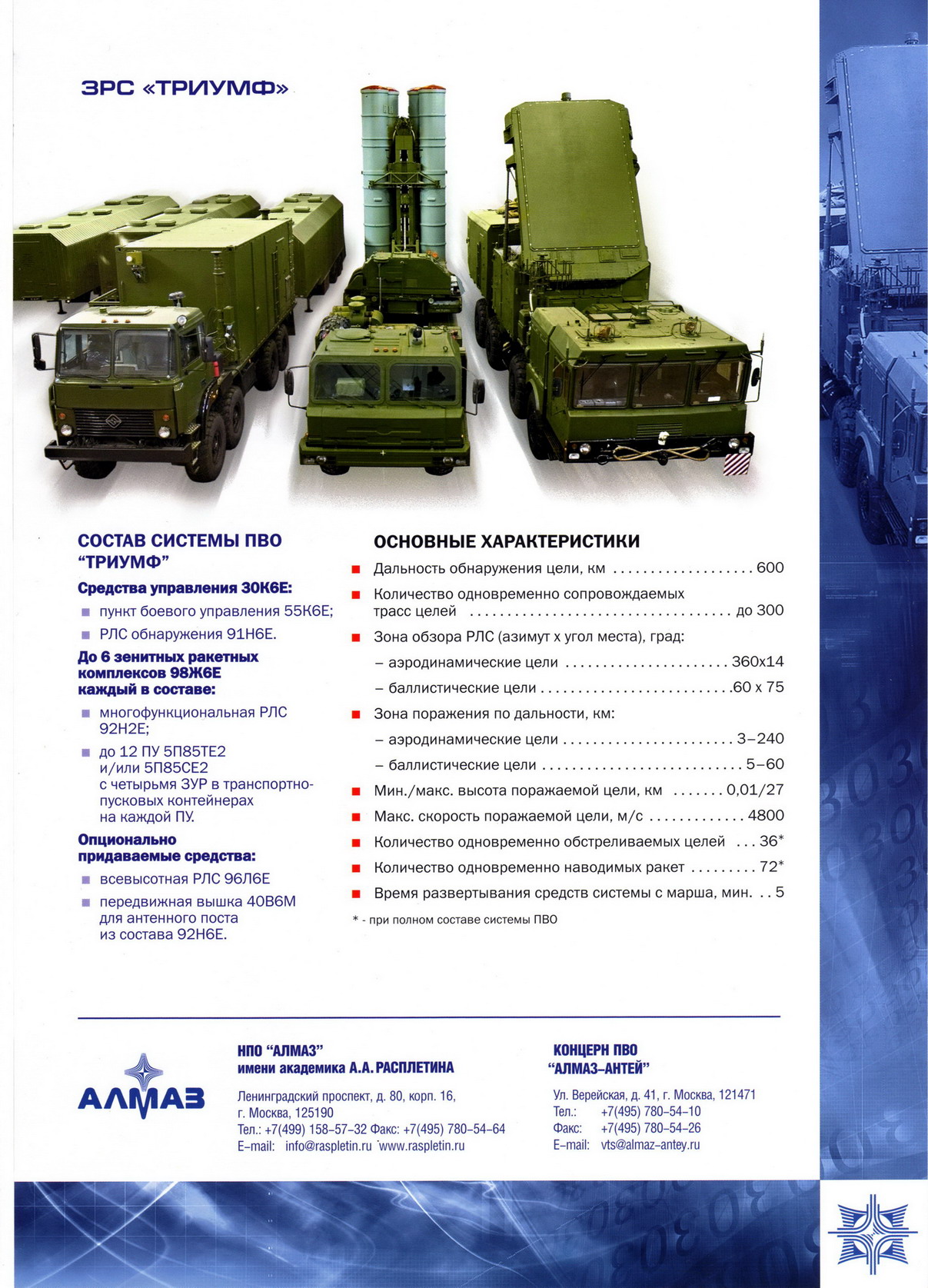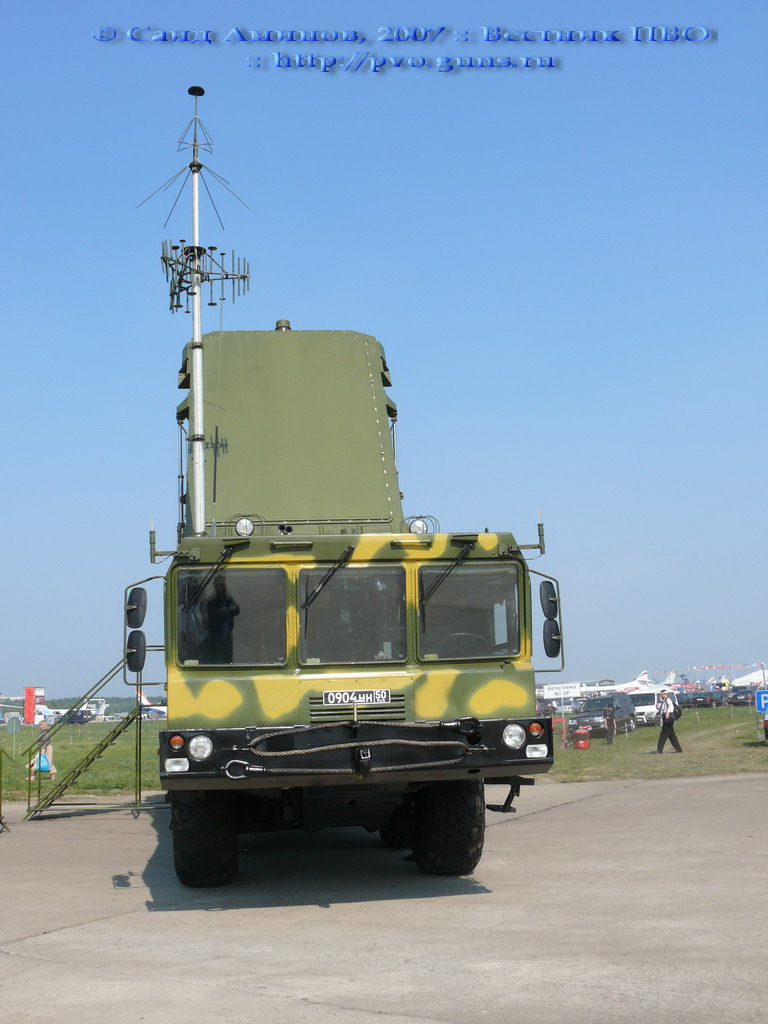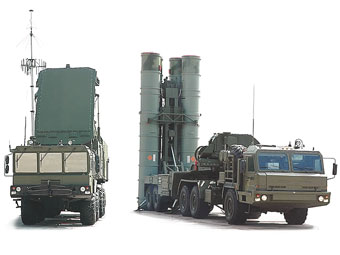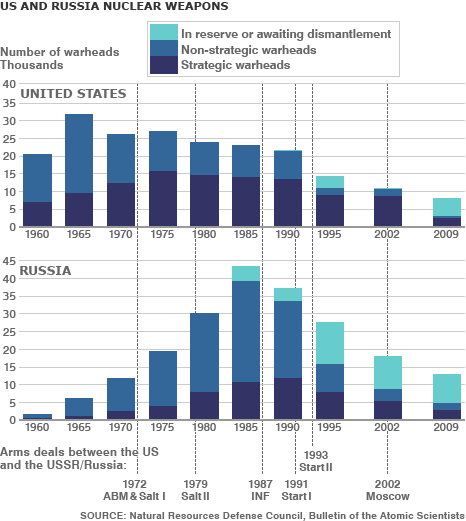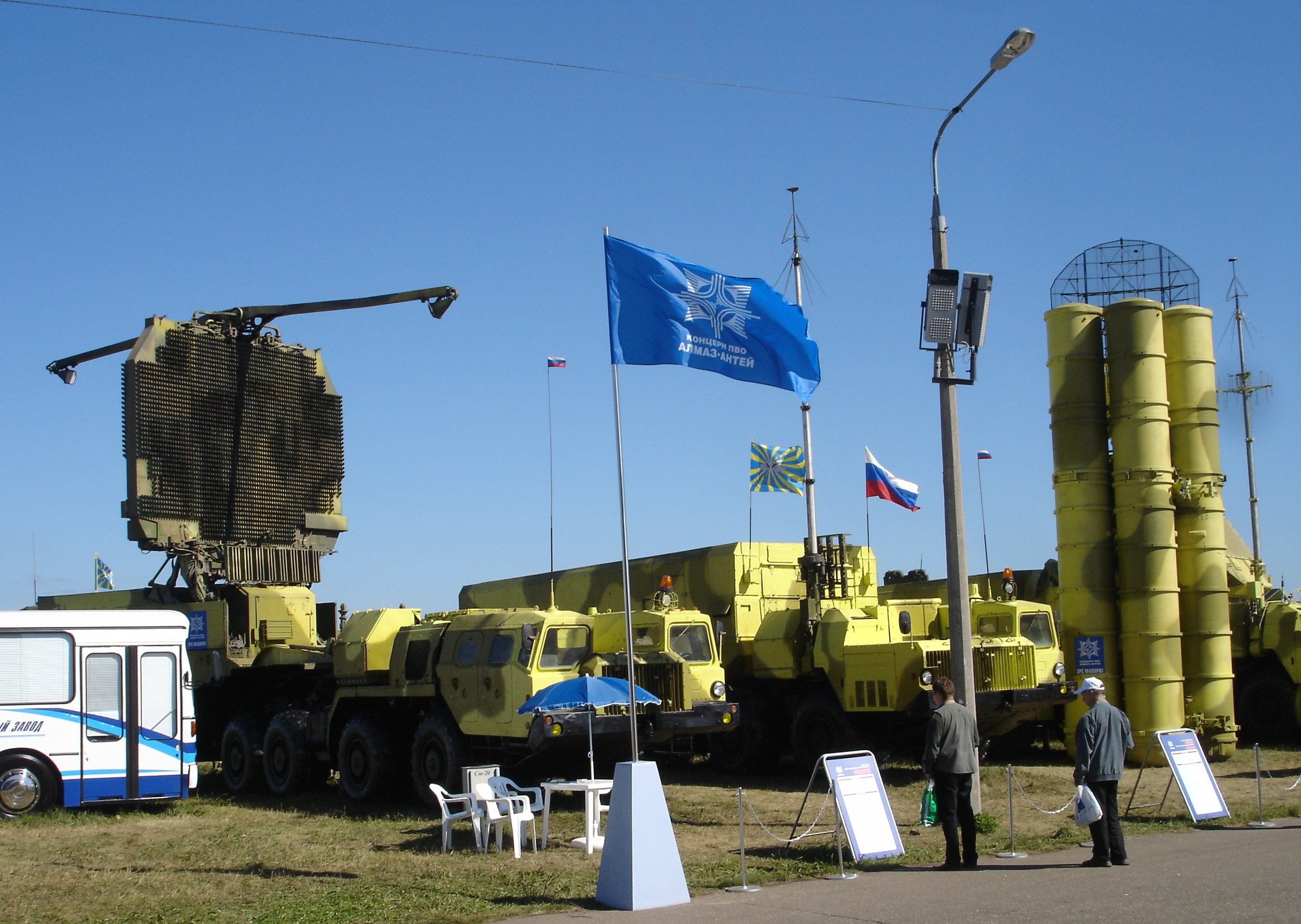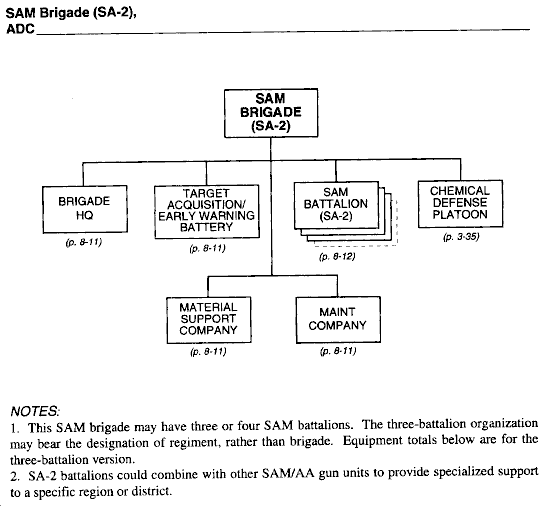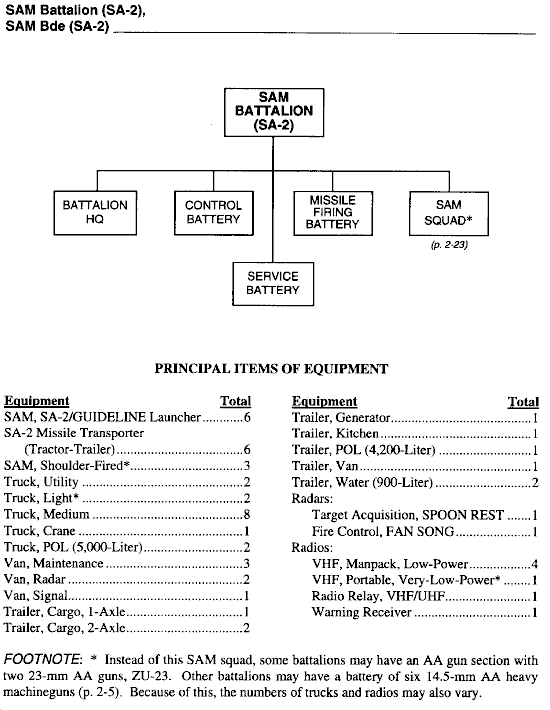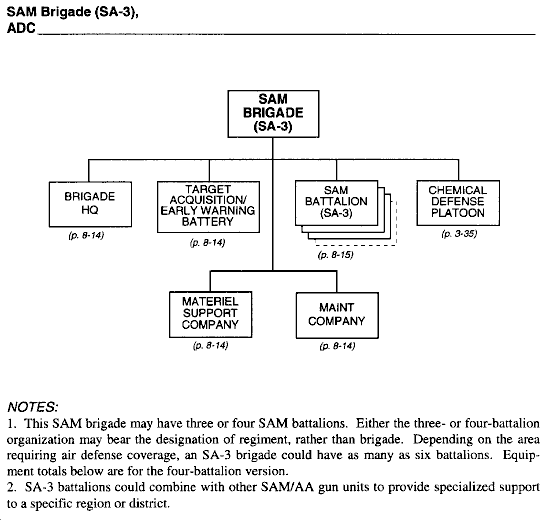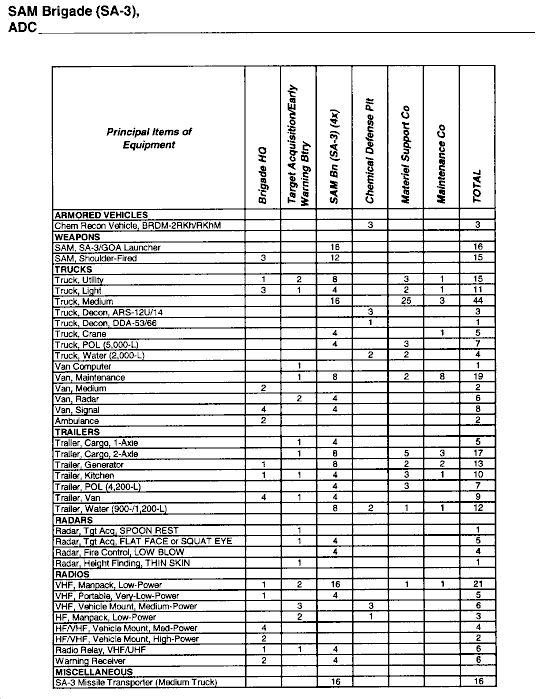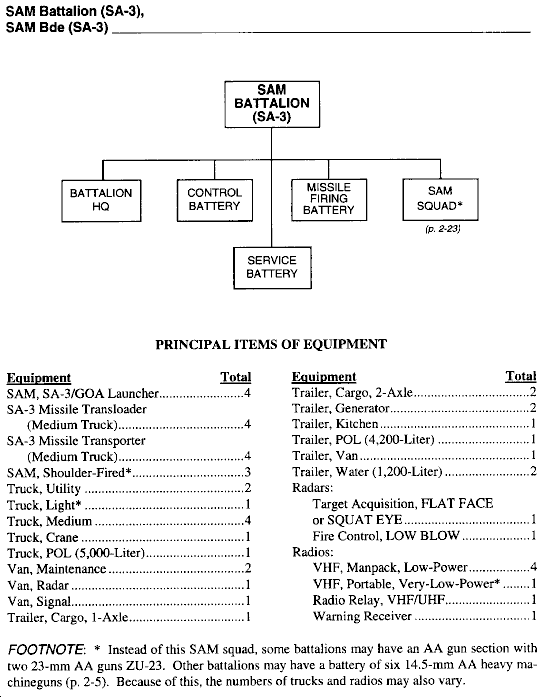jakojako777
New Member
- Joined
- Oct 27, 2009
- Messages
- 2,957
- Likes
- 40
S-400 against the F-22. Western military analysts believe in the superiority of Russi
S-400 against the F-22. Western military analysts believe in the superiority of Russian air defense systems on U.S. military aircraft

Air defense, "Military-Industrial Courier focuses on constantly. Our reader is not bad state of affairs in this sphere, which is key in ensuring the country's defense. In the development and production of air defense focused enormous intellectual and industrial potential of the country. Here, we compete on equal terms with the leading countries of the world: in some moments are ahead, go somewhere on a par. Sometimes that competitors getting ahead. Competition in this sphere has not stopped for the day and is constantly in the field of view of our state, our specialists. However, sometimes extremely useful to look at the results of their own, especially when expert opinion, not one of our supporters. Australian military analyst Dr Carlo Kopp is one of the leading foreign experts. He is co-founder of think tank Air Power Australia and is known for his studies of military aviation and air defense of both the western and produced in Russia. Recently in an interview Lente.ru this scientist (he is also a professional pilot) shared his views on the outcomes of the technical confrontation between East and West, spoke about the prospects of the world military industries.
- In a recent study, you stated that U.S. combat aircraft F-15, F-16 and F/A-18, as well as prospective Joint Strike Fighter, have no chance of survival in the struggle with Russia's air defense systems, as Russians successfully improved them using the experience of NATO's military conflict in Iraq in 1991, and in Serbia in 1999. What achievements Russian producers you consider most significant?
- After the end of the Cold War technologies used in Russia's industry to build anti-aircraft radar systems, antiaircraft missiles, mobile launchers of stations significantly improved. In Soviet times, was created many remarkable and innovative designs of defense equipment, such as radar illumination and guidance 5N63 for S-300P, the scheme "cold start" for anti-aircraft guided missiles 5V55/48N6/9M82, radar early warning 5N64/64N6. But then the West had a great advantage due to a number of new technologies.
Since 1991, many talented Russian engineers, designers were able to get acquainted with the technology, inaccessible to them during the Cold War. Pre-existing restrictions imposed by Western countries, were withdrawn. Now Russia's weapons systems are not so very different from Western counterparts, and often work on the same computer processors.
For example, many Western analysts were shocked when Russia's company Agat reported that the U.S. uses processors from Texas Instruments in its latest active radar homing anti-aircraft guided missiles and missile air-to-air. Similar processors used and Western manufacturers missile. An important factor was the fact that Russia's designers were able to use many modern technologies and components, which do not have access to their predecessors in Soviet times.
The defeat of the Iraqi air defense forces in 1991 caused great confusion in the ranks of the use of guided missiles for defense against aircraft. Russia's experts carefully studied the success of American troops and were able to see the strengths and weaknesses of the technical strategy for the United States. Nevertheless, difficult to say which elements of Russian air defense systems to give them a major advantage, since most of them work together.
Very dangerous anti-aircraft range missiles 48N6E2/E3 and 40N6, because they can affect our air system, radar, electronic reconnaissance and targeting, as well as production of radio-electronic jamming aircraft. And it therefore makes our troops "blind" in the battle, does not allow the fight to the enemy's radar.
The new radars are phased array radio frequency power and high frequency hopping is also able to resist most of our interference.
New self-propelled SAM system with high cross, such as "Favorite", "Triumph", "Antey-2500", the system of protection against radar guided anti-radar missiles and bombs, including those such as missile and missile-gun complexes "Tor-M2E" and Pantsir-S1, also pose serious obstacles to the enemy to suppress air defenses.
By the way, the success of the U.S. and its allies in 1991 and 1999 was largely achieved through the vulnerability of Soviet fixed air defense systems. For example, S-75 and C-125, which could be easily detected and destroyed by anti-radar missiles and guided bombs.
Modern Russia's low-frequency radars and passive radio detection systems are also able to play a role. Although they are not very effective against the F-22 and B-2 bombers, but it is less able to detect "invisible» F-35 aircraft and older models and build on them Zura.
The latest U.S. stealth technology developments in the design of the F-22 and B-2, are able to successfully resist Russia's radars and missiles, but the older samples of American and European aircraft were obsolete in comparison with Russia's systems, such as "Triumph" and "Favorite" as well as new radars and remedies, which are equipped with these air defense missile systems. This significantly alters the situation in the global strategic scale.
- The latest system of air defense S-400 Triumph "according to the developer much more than the old S-300. However, re-Russia Army C-400 has been slow and now Triumph are deployed only in a few regions of Russia, while the most common are still C-300. In your opinion, whether Russia to accelerate delivery of C-400 of his army, or, instead, it would be logical to focus on more sophisticated weapons that meets the requirements of future wars? Should I export joint- belt air defenses and deliver them to its allies like Belarus?
- From the perspective of the Western military analyst, I can say that the smaller systems will make Russia "Triumph", the better, and their exports will be a problem for us strategically. Countries such as Iran and Venezuela, were armed with a system like C-400, able to deliver us into serious trouble.
Sell S-400 Belarus may be attractive from a commercial point of view. But it does not improve Moscow's relations with the EU, since C-400, located near the western border, would cover half the territory of Poland and not allow the Polish aviation airspace safely use their own country. Strategically, such actions can be called provocative and destabilizing.
Profitable export S-400 or not, depends on the specific effects. For example, the sale of S-300 Cyprus has created political turmoil in the region of the Aegean Sea. Similar effects can be expected in any other place where they will be exported to C-400. This is a powerful and strategically important weapons that can neutralize any military aircraft in the arsenal that no F-22 fighter.
- Today, in fact, only Russia and China create their own fifth-generation fighter, which theoretically could compete with American F-22 and F-35. Both projects are still highly classified, but what do you think might be the result of this work?
- To predict the results of which are not yet represented, is always dangerous. Russia has a majority of technologies necessary to create a level of fighter F-22, but it does not have much experience in developing stealth aircraft. When the PAK FA (working title promising fifth-generation fighter Sukhoi. "- Ed.) Will be presented, we can assess how engineers" Sukhoi "managed to cope with these difficulties.
Chinese J-XX? The Chinese have not yet revealed anything about the plane standing by, so that any conclusions about its ability to be speculation.
- While Russia and the United States actually share the market of combat aircraft, a number of other countries also develops and promotes its multi-role fighter. This, for example, the French Rafale, the pan-European Typhoon, Swedish Gripen. Will Russia's manufacturers, such as MiG and Sukhoi, to remain competitive in the market and which of the Russian fighters would you call the best today and why?
- Success in air combat depends on several key factors. The advantage of receiving the aircraft, which are equipped with on-board radar more power, have more missiles, have a higher speed and maneuverability, are primed with large amounts of fuel and, moreover, protected by more advanced stealth technology. None of the European fighter aircraft on these indicators has a significant advantage over the new Su-35-1 or MIG-35.
Fighter aircraft Eurofighter and Gripen NG will be armed with the Meteor missile ram-jet engine. This will allow them to gain an advantage in a distant battle, but only so long as similar to Russia's missile RVV-AE-PD extended range will not appear in mass production.
It is hard to say which of the European fighter more competitive, because none of them could achieve great success in the global market.
With regard to Russian aircraft, the Su-35-1 has the best export potential as compared to the MiG-35, as most potential customers are in Asia, and for greater distances need a big plane with a wide range.
PAK FA, if its design will be successful, can achieve great success in the global market, while the F-35 - is a technical error. Western countries, if they can not buy F-22 will certainly face the strategic challenge.
- What are the advantages and disadvantages of Russia voenproma? Can Russia in this respect to be independent from the former Soviet republics, whose establishment in the Soviet era were closely linked with Russia?
- In Soviet times the military industry had no shortage of public funding for the production of deadly weapons on a massive scale. At the same time it has been denied access to the latest advances in computers and high-technology world market. Now the situation is opposite. Russia is not enough funding its military-industrial complex, and most Warsaw Pact countries became members of NATO and Russia to buy arms. But now your OPK get unlimited access to modern computers, software, high-frequency electronics and optical chips on the world market.
I studied the Soviet and Russia's military technology for over thirty years. Since 1991, I witnessed a real explosion of creativity and innovation. The speed with which Russia's arms industry took over the West's complex computer technologies and use them in their development, was striking. Russia still has a high professional culture in the field of engineering decisions and military science.
When modern Russia's professional magazines write about radar systems and missile arms, it does it better than most similar professional publications in English. During the Cold War was all the opposite. Western defense industry has suffered greatly from a brain drain - are often highly skilled engineers and scientists are leaving to develop computers in Silicon Valley or to engage in finance on Wall Street: the salary is higher and the risk of losing their job less.
Some say that Russia's military-industrial complex now faced with the same: the talented engineers and scientists leave the country. However, if the talented young engineer or scientist wants to find work in their fields in Russia, the choice he has in fact not be - it goes to the military research institutes or in the defense plant. In the great advantage of Russia's military-industrial complex, as compared with Western rivals.
Compared with the period of the Cold War the number of doctors in the field of physics, engineering and computer science, mathematics in the West declined. It is difficult to retain talented graduates in university laboratories or in the defense industry.
The independence of Russia's military industry of former Soviet republics also an interesting question. The severance of relations with Ukraine in 2004-2005, has your MIC disservice, since many of the key design offices and businesses remained in the Ukraine. Moreover, many Ukrainian companies also have been eliminated or have to compete with Russia, selling spare parts, carrying out repairs and modernization of weapons of Soviet manufacture. Relations between Russia and Ukraine have been difficult since tsarist times, and today Russia is paying the price politically.
Russia industry in contrast to western is not afraid to experiment with new ideas and solutions, because the experiments are limited in the West need to be funded from company profits.

Andrei Fedorov, MIC number 30 (296), 5-11 August 2009
ÎÀÎ "Êîíöåðí ÏÂÎ "Àëìàç - Àíòåé" - Ñ-400 ïðîòèâ F-22. Çàïàäíûå âîåííûå àíàëèòèêè óâåðåíû â ïðåâîñõîäñòâå ðîññèéñêèõ ñèñòåì ÏÂÎ íàä àìåðèêàíñêîé áîåâîé àâèàöèåé
S-400 against the F-22. Western military analysts believe in the superiority of Russian air defense systems on U.S. military aircraft

Air defense, "Military-Industrial Courier focuses on constantly. Our reader is not bad state of affairs in this sphere, which is key in ensuring the country's defense. In the development and production of air defense focused enormous intellectual and industrial potential of the country. Here, we compete on equal terms with the leading countries of the world: in some moments are ahead, go somewhere on a par. Sometimes that competitors getting ahead. Competition in this sphere has not stopped for the day and is constantly in the field of view of our state, our specialists. However, sometimes extremely useful to look at the results of their own, especially when expert opinion, not one of our supporters. Australian military analyst Dr Carlo Kopp is one of the leading foreign experts. He is co-founder of think tank Air Power Australia and is known for his studies of military aviation and air defense of both the western and produced in Russia. Recently in an interview Lente.ru this scientist (he is also a professional pilot) shared his views on the outcomes of the technical confrontation between East and West, spoke about the prospects of the world military industries.
- In a recent study, you stated that U.S. combat aircraft F-15, F-16 and F/A-18, as well as prospective Joint Strike Fighter, have no chance of survival in the struggle with Russia's air defense systems, as Russians successfully improved them using the experience of NATO's military conflict in Iraq in 1991, and in Serbia in 1999. What achievements Russian producers you consider most significant?
- After the end of the Cold War technologies used in Russia's industry to build anti-aircraft radar systems, antiaircraft missiles, mobile launchers of stations significantly improved. In Soviet times, was created many remarkable and innovative designs of defense equipment, such as radar illumination and guidance 5N63 for S-300P, the scheme "cold start" for anti-aircraft guided missiles 5V55/48N6/9M82, radar early warning 5N64/64N6. But then the West had a great advantage due to a number of new technologies.
Since 1991, many talented Russian engineers, designers were able to get acquainted with the technology, inaccessible to them during the Cold War. Pre-existing restrictions imposed by Western countries, were withdrawn. Now Russia's weapons systems are not so very different from Western counterparts, and often work on the same computer processors.
For example, many Western analysts were shocked when Russia's company Agat reported that the U.S. uses processors from Texas Instruments in its latest active radar homing anti-aircraft guided missiles and missile air-to-air. Similar processors used and Western manufacturers missile. An important factor was the fact that Russia's designers were able to use many modern technologies and components, which do not have access to their predecessors in Soviet times.
The defeat of the Iraqi air defense forces in 1991 caused great confusion in the ranks of the use of guided missiles for defense against aircraft. Russia's experts carefully studied the success of American troops and were able to see the strengths and weaknesses of the technical strategy for the United States. Nevertheless, difficult to say which elements of Russian air defense systems to give them a major advantage, since most of them work together.
Very dangerous anti-aircraft range missiles 48N6E2/E3 and 40N6, because they can affect our air system, radar, electronic reconnaissance and targeting, as well as production of radio-electronic jamming aircraft. And it therefore makes our troops "blind" in the battle, does not allow the fight to the enemy's radar.
The new radars are phased array radio frequency power and high frequency hopping is also able to resist most of our interference.
New self-propelled SAM system with high cross, such as "Favorite", "Triumph", "Antey-2500", the system of protection against radar guided anti-radar missiles and bombs, including those such as missile and missile-gun complexes "Tor-M2E" and Pantsir-S1, also pose serious obstacles to the enemy to suppress air defenses.
By the way, the success of the U.S. and its allies in 1991 and 1999 was largely achieved through the vulnerability of Soviet fixed air defense systems. For example, S-75 and C-125, which could be easily detected and destroyed by anti-radar missiles and guided bombs.
Modern Russia's low-frequency radars and passive radio detection systems are also able to play a role. Although they are not very effective against the F-22 and B-2 bombers, but it is less able to detect "invisible» F-35 aircraft and older models and build on them Zura.
The latest U.S. stealth technology developments in the design of the F-22 and B-2, are able to successfully resist Russia's radars and missiles, but the older samples of American and European aircraft were obsolete in comparison with Russia's systems, such as "Triumph" and "Favorite" as well as new radars and remedies, which are equipped with these air defense missile systems. This significantly alters the situation in the global strategic scale.
- The latest system of air defense S-400 Triumph "according to the developer much more than the old S-300. However, re-Russia Army C-400 has been slow and now Triumph are deployed only in a few regions of Russia, while the most common are still C-300. In your opinion, whether Russia to accelerate delivery of C-400 of his army, or, instead, it would be logical to focus on more sophisticated weapons that meets the requirements of future wars? Should I export joint- belt air defenses and deliver them to its allies like Belarus?
- From the perspective of the Western military analyst, I can say that the smaller systems will make Russia "Triumph", the better, and their exports will be a problem for us strategically. Countries such as Iran and Venezuela, were armed with a system like C-400, able to deliver us into serious trouble.
Sell S-400 Belarus may be attractive from a commercial point of view. But it does not improve Moscow's relations with the EU, since C-400, located near the western border, would cover half the territory of Poland and not allow the Polish aviation airspace safely use their own country. Strategically, such actions can be called provocative and destabilizing.
Profitable export S-400 or not, depends on the specific effects. For example, the sale of S-300 Cyprus has created political turmoil in the region of the Aegean Sea. Similar effects can be expected in any other place where they will be exported to C-400. This is a powerful and strategically important weapons that can neutralize any military aircraft in the arsenal that no F-22 fighter.
- Today, in fact, only Russia and China create their own fifth-generation fighter, which theoretically could compete with American F-22 and F-35. Both projects are still highly classified, but what do you think might be the result of this work?
- To predict the results of which are not yet represented, is always dangerous. Russia has a majority of technologies necessary to create a level of fighter F-22, but it does not have much experience in developing stealth aircraft. When the PAK FA (working title promising fifth-generation fighter Sukhoi. "- Ed.) Will be presented, we can assess how engineers" Sukhoi "managed to cope with these difficulties.
Chinese J-XX? The Chinese have not yet revealed anything about the plane standing by, so that any conclusions about its ability to be speculation.
- While Russia and the United States actually share the market of combat aircraft, a number of other countries also develops and promotes its multi-role fighter. This, for example, the French Rafale, the pan-European Typhoon, Swedish Gripen. Will Russia's manufacturers, such as MiG and Sukhoi, to remain competitive in the market and which of the Russian fighters would you call the best today and why?
- Success in air combat depends on several key factors. The advantage of receiving the aircraft, which are equipped with on-board radar more power, have more missiles, have a higher speed and maneuverability, are primed with large amounts of fuel and, moreover, protected by more advanced stealth technology. None of the European fighter aircraft on these indicators has a significant advantage over the new Su-35-1 or MIG-35.
Fighter aircraft Eurofighter and Gripen NG will be armed with the Meteor missile ram-jet engine. This will allow them to gain an advantage in a distant battle, but only so long as similar to Russia's missile RVV-AE-PD extended range will not appear in mass production.
It is hard to say which of the European fighter more competitive, because none of them could achieve great success in the global market.
With regard to Russian aircraft, the Su-35-1 has the best export potential as compared to the MiG-35, as most potential customers are in Asia, and for greater distances need a big plane with a wide range.
PAK FA, if its design will be successful, can achieve great success in the global market, while the F-35 - is a technical error. Western countries, if they can not buy F-22 will certainly face the strategic challenge.
- What are the advantages and disadvantages of Russia voenproma? Can Russia in this respect to be independent from the former Soviet republics, whose establishment in the Soviet era were closely linked with Russia?
- In Soviet times the military industry had no shortage of public funding for the production of deadly weapons on a massive scale. At the same time it has been denied access to the latest advances in computers and high-technology world market. Now the situation is opposite. Russia is not enough funding its military-industrial complex, and most Warsaw Pact countries became members of NATO and Russia to buy arms. But now your OPK get unlimited access to modern computers, software, high-frequency electronics and optical chips on the world market.
I studied the Soviet and Russia's military technology for over thirty years. Since 1991, I witnessed a real explosion of creativity and innovation. The speed with which Russia's arms industry took over the West's complex computer technologies and use them in their development, was striking. Russia still has a high professional culture in the field of engineering decisions and military science.
When modern Russia's professional magazines write about radar systems and missile arms, it does it better than most similar professional publications in English. During the Cold War was all the opposite. Western defense industry has suffered greatly from a brain drain - are often highly skilled engineers and scientists are leaving to develop computers in Silicon Valley or to engage in finance on Wall Street: the salary is higher and the risk of losing their job less.
Some say that Russia's military-industrial complex now faced with the same: the talented engineers and scientists leave the country. However, if the talented young engineer or scientist wants to find work in their fields in Russia, the choice he has in fact not be - it goes to the military research institutes or in the defense plant. In the great advantage of Russia's military-industrial complex, as compared with Western rivals.
Compared with the period of the Cold War the number of doctors in the field of physics, engineering and computer science, mathematics in the West declined. It is difficult to retain talented graduates in university laboratories or in the defense industry.
The independence of Russia's military industry of former Soviet republics also an interesting question. The severance of relations with Ukraine in 2004-2005, has your MIC disservice, since many of the key design offices and businesses remained in the Ukraine. Moreover, many Ukrainian companies also have been eliminated or have to compete with Russia, selling spare parts, carrying out repairs and modernization of weapons of Soviet manufacture. Relations between Russia and Ukraine have been difficult since tsarist times, and today Russia is paying the price politically.
Russia industry in contrast to western is not afraid to experiment with new ideas and solutions, because the experiments are limited in the West need to be funded from company profits.
Andrei Fedorov, MIC number 30 (296), 5-11 August 2009
ÎÀÎ "Êîíöåðí ÏÂÎ "Àëìàç - Àíòåé" - Ñ-400 ïðîòèâ F-22. Çàïàäíûå âîåííûå àíàëèòèêè óâåðåíû â ïðåâîñõîäñòâå ðîññèéñêèõ ñèñòåì ÏÂÎ íàä àìåðèêàíñêîé áîåâîé àâèàöèåé


